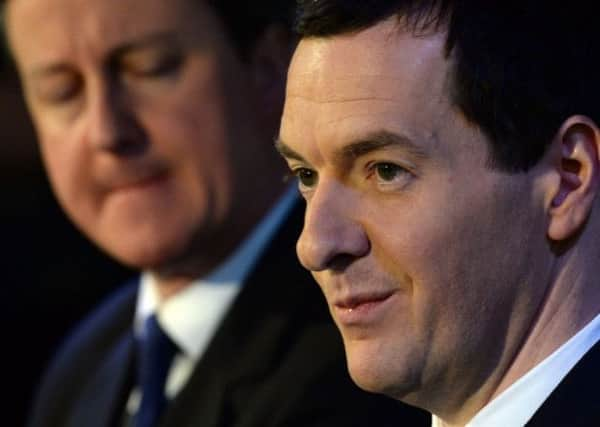Leaders: Osborne’s brutal cuts demand brutal honesty


Well, George Osborne has certainly set a challenge by launching his spending review with a call for Whitehall to cut £20 billion from its budgets. Not every department, obviously, as that would come at too high a political cost. But is there value in this exercise, or simply damage?
Mr Osborne says it is possible to get more for less if money is managed carefully. If that is true, it is a damning indictment of the way the money is currently managed. It is hard to believe at this stage that simply by stopping waste we can get more for less.
Advertisement
Hide AdAdvertisement
Hide AdIt is also hard to believe that it will be achieved by prioritising spending which, “promotes innovation and greater collaboration in public services; promotes growth and productivity including through devolution within England; promotes choice and competition and which drive efficiency and value for money”.
Departments are also being asked to examine the way they manage their assets and consider privatisation and contracting out where necessary. Again, to use current business speak, probably not a game changer.
What the chancellor is asking is for each unprotected department to come up with savings plans of up to 40 per cent of their budget. They are being asked to say what impact that level of cuts would have on the services they provide.
Part of the plan is also to sell off land owned by the government. It is quite staggering to think that the Ministry of Defence owns 1 per cent of all land in the UK. Even at a time when there are clear and present threats to UK security, does it really need that much? Selling some off for much-need new homes is probably a good idea, but again is probably not going to hit the targets.
Of course, it could be that Mr Osborne is playing the age-old political game of setting expectations at “brutal”, then rowing back from that position for it to be greeted with relief and for the government to be seen as listening, compromising, and reasonable.
But it has to be remembered that this is not the first time government departments have been asked to make savings. A lot of savings have already been made. Of course, things can usually be made more efficient, but with the level of cuts being proposed here by Mr Osborne it stands to reason services must also contract.
The Scottish block grant will be hit, but the Treasury says it will be sheltered from the worst. While it is right that the role of the state in society is questioned and examined, let us see honesty over what impact these cuts will have.
Signs of improvement in A&E
Health service workers across Scotland are to be congratulated at the progress made in bringing down waiting times in Accident and Emergency units.
Advertisement
Hide AdAdvertisement
Hide AdIn a bid to tackle what was seen as a problem the Scottish Government moved earlier this year to have A&E department figures published on a weekly basis, and now for the first time a key target has been met with official figures revealing 95.4 per cent of patients were seen and then admitted, transferred or discharged within four hours.
Now there are a couple of caveats to go with that, the first being that not every board in Scotland made the target, and the second being the week in question ended on 12 July and it is to be expected that holidays meant that this was never going to be the busiest period for hospitals. Health secretary Shona Robison praises the current efforts but alludes to the timing by calling on health boards to continue the progress in the much busier winter.
But the publication of weekly figures has not been universally accepted as a good thing. Last month Dr Peter Bennie, chair of the BMA’s Scottish council, said the weekly figures simply fed a political and media obsession and diverted attention from real problems in the NHS.
Now there is a danger on becoming obsessed with performance measured by figures, and waiting-time statistics were never meant to be a panacea for all the health service’s ills. But they can play a part in delivering some improvement. When weekly reporting started six months ago, 86.1 per cent of A&E patients were treated within four hours.